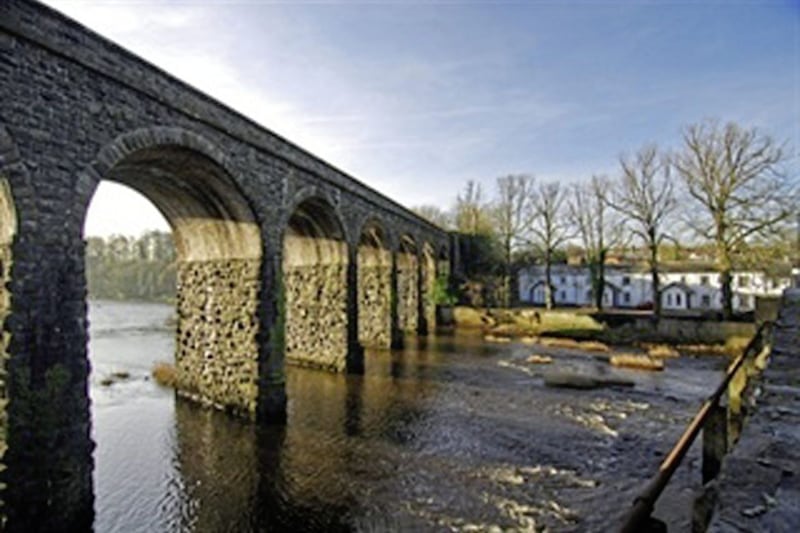Plans are underway to install permanent illumination at a historic Co Antrim landmark designed by one of the most famous architects to work in Ireland.
The lighting up at night of the Randalstown Viaduct had been agreed last year by Antrim and Newtownabbey Borough Council, and now a tender for the project has been approved.
The iconic 19th century bridge over the River Maine has been a favourite landmark for painters and photographers for generations, following the completion of its construction in 1856 to allow a rail link to Cookstown.
It was designed by Charles Lanyon, the English-born architect and civil engineer behind Belfast buildings Queen’s University, the Palm House in the city’s Botanic Gardens, and the Crumlin Road Gaol and Courthouse,
Lanyon, who became Lord Mayor of Belfast in 1862, also designed the Frosses Road in Co Antrim and the Campanile bell tower at Trinity College Dublin.
In 2017, urgent repairs were carried out on the viaduct to prevent its deterioration, while in 2022 the top of the structure was transformed into a community garden, modelled after New York’s High Line - a former rail rack turned into an elevated linear park.
The illumination of the grade B+ listed viaduct with “warm white” lighting will be part-funded by the Special EU Programmes Body.
At last month’s full meeting of Antrim and Newtownabbey Borough Council, it was proposed following the tender approval that work on the project could be completed by May.
A planning report “recognises the importance of the viaduct and seeks to encourage its enhancement through supplementary lighting”. It also said a lack of lighting at the popular attraction “is a health and safety issue which needs to be addressed”.
“The design of the new (lighting) columns is contemporary, though respectful as a modern intervention and as such is considered sympathetic to the listed structure,” the report added.









